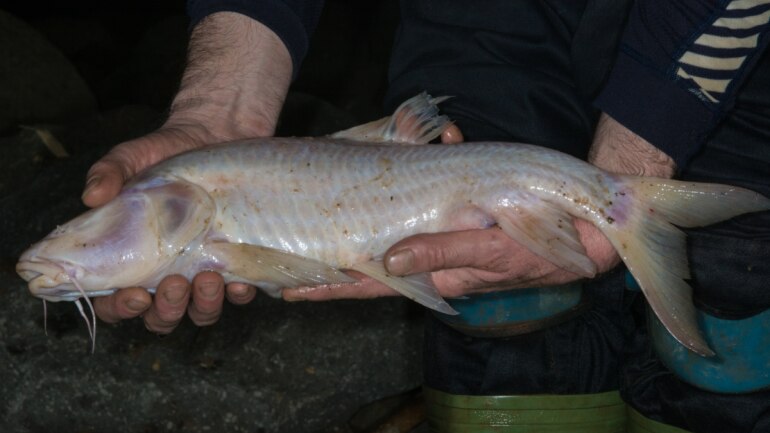- New cave fish dwarfs all other known kinds
- Puts paid to assumptions about body size
- Not yet clear if it’s a new species
Proving a long-held notion “spectacularly wrong” is a scientist’s wet dream. To do it shining a torchlight in a dingy Indian cave, as whiskered fish acquaint themselves with the sole of your boot, is something else entirely.
Yet that is what experts from the UK, Switzerland and India say they did by discovering a new kind of cave fish, similar in anatomy to an endangered mahseer species, in Meghalaya last February. It is “by far the largest known subterreanean fish in the world”, they write in a recent paper.
The biggest specimen they found was longer than 40 cm — way too long to fit in your geometry box. That may still seem small, but the scientists explain that it dwarfs the vast majority of cave fish. (Imagine encountering a human close to 30 feet tall.)
The discovery of the Meghalayan fish, they say, puts paid to the long-held assumption that the paucity of food in caves limits body length to 35 cm or less.
“All previous discoveries of cave fish from India have been of small fish, and this is the largest of the cave fish discovered in the country, and probably from anywhere in the world,” said Rajeev Raghavan, an aquatic conservation biologist and one of the paper’s co-authors.
The other Indian on the team is Neelesh Dahanukar from the Indian Institute of Science Education and Research in Pune.
‘VERY INTERESTING FIND’
Widely consumed in India, mahseer live mostly in “fast-flowing streams and rivers and also large reservoirs”, Raghavan told IndiaToday.in. The new species is similar to the golden mahseer, Tor putitora, except for its blander look, lack of eyes and — of course — its unusual underground home in Meghalaya’s Jaintia Hills. It is not clear yet if a new species has been found.ADVERTISEMENT
“A locked cave population of mahseer is a very interesting find that shows how little we know about these groups of fish, though the first mahseer in the world was described in 1822,” said Raghavan, who works at the Kerala University of Fisheries and Ocean Studies in Kochi.
But how did it go undetected for so long?
“Caves are one of the least-explored of all habitats,” Rajeev Raghavan said. “We know absolutely nothing about the cave fauna of India — especially in the streams and lakes that are found inside the caves.”
What about conservation? Are there any known threats to the fish’s survival?
Raghavan says no.
“It is difficult terrain to get to, and so I think no short-term threats would impact the populations,” he said.
There’s much left to discover about the Meghalayan cave fish, but one thing’s for sure. We know they don’t mind biscuits.
by Ganesh Radha-Udayakumar




